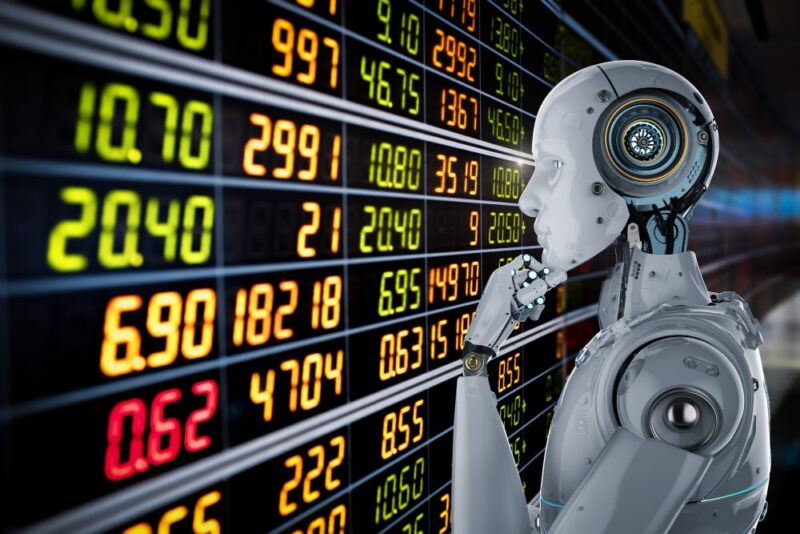In the dynamic landscape of financial markets, the emergence of algorithms has revolutionized the way trades are executed, creating a seismic shift from traditional methods to a more automated approach. These sophisticated mathematical formulas, operating at lightning speed, analyze vast amounts of data, identify patterns, and execute trades far surpassing human capabilities.
But what exactly drives this automated trading phenomenon? Understanding the underlying principles of algorithms is crucial for anyone looking to navigate this complex world, whether you’re a seasoned trader or a curious newcomer. This article will delve into the pivotal role of algorithms in automated trading, unraveling their intricacies and implications, while also shedding light on what every aspiring trader should grasp to thrive in this algorithm-driven arena.
Buckle up; the journey through the fascinating interplay of technology and finance is just beginning.
Understanding Algorithms in Trading

Understanding algorithms in trading is akin to deciphering a complex code that governs market behavior. At their core, algorithms are mathematical models designed to analyze vast amounts of data, identify patterns, and execute trades at speeds human traders cannot match.
Using automated trading systems, these algorithms leverage a myriad of variables—from historical price movements to real-time market sentiment—in order to optimize trading strategies. Yet, the beauty and sophistication of algorithms lie not just in their speed or efficiency but also in their adaptability; they can be fine-tuned to respond to shifting market conditions, making split-second decisions that could be the difference between profit and loss.
This dynamic interplay of analysis and execution opens up a world of opportunities and challenges, demanding a deep understanding of both the underlying technology and the financial landscapes it navigates. In this intricate dance of logic and strategy, traders must not only trust the algorithms but also grasp the fundamentals that drive their design and performance.
How Algorithms Work in Trading

Algorithms in trading operate through a sophisticated interplay of data analysis, pattern recognition, and automated decision-making. At their core, these algorithms sift through vast amounts of historical and real-time market data to identify trends and price movements.
They employ mathematical models and statistical techniques to forecast potential asset behaviors, executing trades at breakneck speeds that humans simply cannot match. Imagine a complex dance of numbers and probabilities, where an algorithm can react in milliseconds to market fluctuations, buying or selling based on predefined strategies.
Some algorithms harness machine learning, adapting and evolving with new data, while others rely on fixed rules established by seasoned traders. In essence, the world of algorithmic trading is not just about speed; it’s a nuanced blend of art and science, transforming raw data into actionable insights with impressive precision.
The Benefits of Algorithmic Trading

Algorithmic trading offers a multitude of advantages that can significantly enhance trading efficiency and effectiveness. By leveraging complex mathematical models and advanced statistical techniques, algorithms can analyze vast amounts of data at speeds unimaginable for human traders.
This rapid processing ability allows for the timely execution of trades based on real-time market conditions, reducing the likelihood of emotional decision-making that often plagues human traders under pressure. Moreover, algorithmic trading operates around the clock, seizing opportunities even when human traders are away from their screens, which is particularly valuable in today’s global markets.
The precision of algorithms also contributes to better risk management, enabling traders to set strict parameters and controls that minimize potential losses. In a landscape where every millisecond counts, the synergy of speed, accuracy, and strategic insight offered by algorithmic trading can be a game-changer, propelling traders toward greater success in their endeavors.
Conclusion
In conclusion, the integration of algorithms in automated trading has fundamentally transformed the investment landscape, offering both opportunities and challenges for traders and investors alike. Understanding the mechanics behind these automated trading systems is crucial for navigating the complexities of financial markets.
As technology continues to evolve, staying informed about the potential risks and rewards associated with algorithmic trading can empower traders to make more informed decisions. Ultimately, leveraging the power of algorithms can enhance trading efficiency and adaptability, but it is essential to approach this powerful tool with a combination of knowledge, strategy, and prudence.


